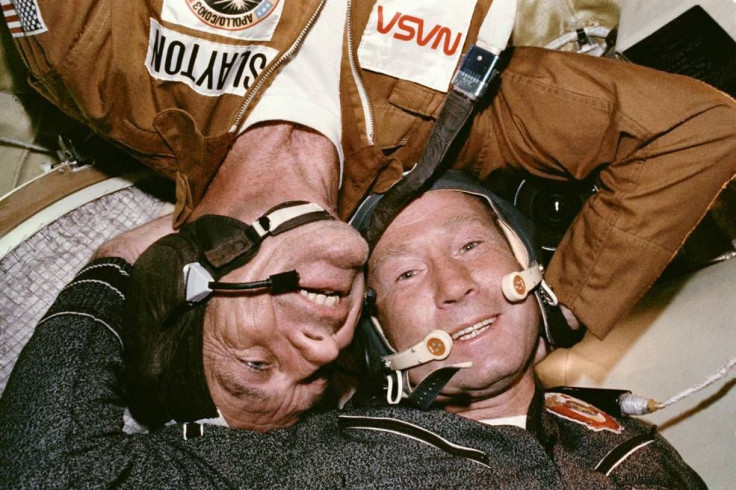International Space Station Crew Commemorates 40th Anniversary Of US-Russia 'Handshake In Space'

On July 15, 1975, a Soyuz spacecraft carrying Soviet cosmonauts Alexey Leonov and Valery Kubasov was launched from the Baikonur Cosmodrome in Kazakhstan. A few hours later, the United States launched an Apollo capsule carrying astronauts Thomas Stafford, Vance Brand and Donald Slayton. The two spacecrafts docked above the Atlantic Ocean two days later in a historic event that marked a temporary thaw in U.S.-Soviet relations.
On July 17, 1975, two men -- Stafford and Leonov -- shook hands in space, officially beginning an era of joint activities that has continued to withstand a deterioration in relations between the two Cold War-era rivals. On the International Space Station (ISS), the two countries continue to work together even now.

On Wednesday -- 40 years after the landmark “handshake in space” -- two Russians and an American aboard the ISS commemorated the event through a joint address.
“Forty years ago, the United State and Russia completed one of the most significant achievements in human spaceflight history. That milestone, once thought impossible because of differences in politics, language and culture, was achieved because of the common vision of our two countries and because of the common desire for humans to explore,” American astronaut Scott Kelly said, in a video address from the ISS, floating side-by-side with Russian cosmonauts Gennady Padalka and Mikhail Kornienko. “Today we honor those who worked so hard on such a complex endeavor 40 years ago that not only brought our nations together, but paved the way for the ISS and the missions yet to unfold.”
The importance of the 1975 Apollo-Soyuz Test Project (ASTM) cannot be overstated. Until that moment, space had been an arena for one of the most enduring rivalries between the Soviet Union and the U.S. as both nations competed for superiority. The event also marked a shift of focus from the “space race,” which the U.S. won by putting the first man on the moon in 1969.
“It was kind of unique that here each country had at least ten thousand nuclear weapons aimed at each other, but yet would have a joint cooperation in space,” Stafford, now 84, said, in an interview released by NASA on Monday.
© Copyright IBTimes 2024. All rights reserved.






















